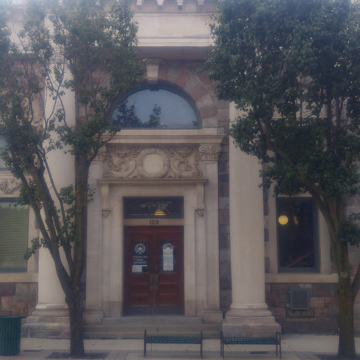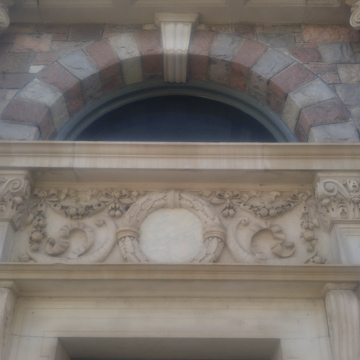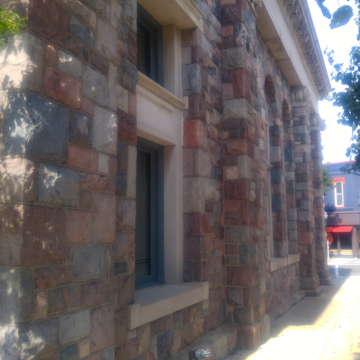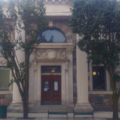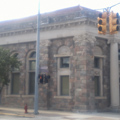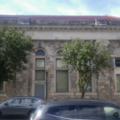You are here
Fourteenth District Court (George P. Glazier Bank Building)
George P. Glazier (1841–1901) with Michael J. Noyes established the first bank in Chelsea. Upon Glazier's death, his son Frank, who founded the Glazier Stove Works ( WA19), hired Allen, a capable and respected architect from nearby Jackson, to design this building as a memorial to his father. The Chelsea Standard for April 4, 1901, called the Beaux-Arts classical bank “the finest bank building between Chicago and Detroit.” Fronting the trapezoidal plan is a giant in antis Ionic portico, which frames the monumental two-story arched entrance. The fieldstone was laid in the walls by George Hindelang. Carved Bedford limestone festoons and shells contrast in color and texture with the rough-hewn blocks of pink and gray granite walls. A massive cornice rests on heavy fieldstone piers with Ionic capitals. The building now houses the Fourteenth District Court, and much of the elaborate interior marble and woodwork remain intact. The courtroom occupies the main banking room beneath a skylit dome.
Writing Credits
If SAH Archipedia has been useful to you, please consider supporting it.
SAH Archipedia tells the story of the United States through its buildings, landscapes, and cities. This freely available resource empowers the public with authoritative knowledge that deepens their understanding and appreciation of the built environment. But the Society of Architectural Historians, which created SAH Archipedia with University of Virginia Press, needs your support to maintain the high-caliber research, writing, photography, cartography, editing, design, and programming that make SAH Archipedia a trusted online resource available to all who value the history of place, heritage tourism, and learning.







